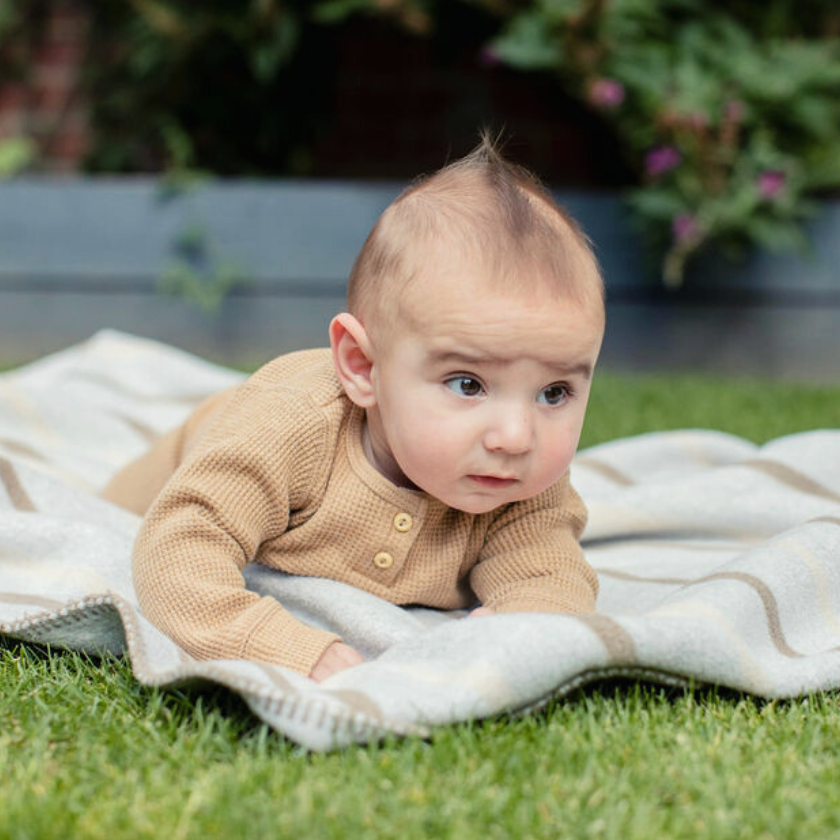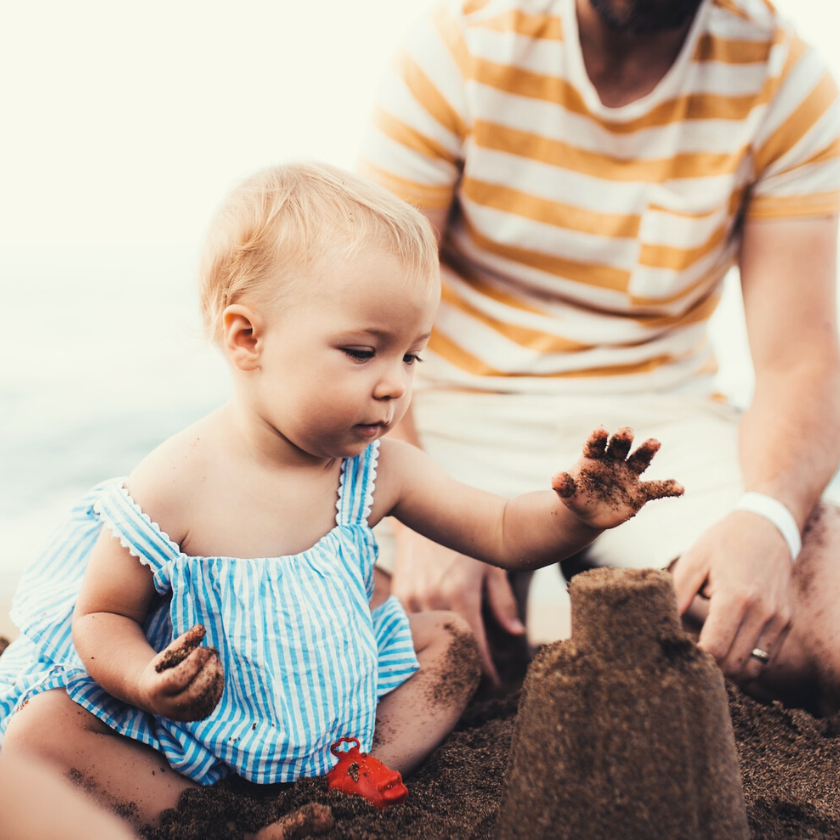Wellbeing
How to Sterilise Bottles for Baby Formula
New parents have a lot on their plates, and we understand that keeping track of everything can be a bit overwhelming. One thing that's super important, though, is making sure your baby's bottles are properly sterilised. It's all about keeping your little one healthy and happy!
To help put your mind at ease, we've gathered answers to the most common questions about sterilising and storing bottles for both traditional and goat milk formula. We’re here to support you every step of the way, starting with this guide.
Why do I need to sterilise baby bottles?
In the first few months, your baby's immune system is beginning to develop. This means that for new parents, it’s really important to protect their delicate immune systems from infections. This is where sterilising baby bottles for feeding becomes crucial to their wellbeing. Not sterilising baby bottles can make your child more susceptible to infection, which can result in vomiting and diarrhoea, and a very poorly little one.
How to sterilise baby bottles for formula
For new parents learning as they go, there are several quick and easy ways to sterilise your feeding equipment:
• Boiling
• Cold water sterilisation
• Steam sterilising with an electric steriliser or microwave
• UV Sterilising
Before you start sterilising feeding items, make sure to clean the bottles, teats, breast pumps and other equipment in hot water using gentle soap and a bottle brush. The brush cleans any nooks and crannies to get rid of lurking nasties. Rinse thoroughly under clear running water before sterilising.
If you prefer using the dishwasher, ensure everything faces downwards for the best results. You may still choose to wash teats by hand to prevent any damage.
How to sterilise baby bottles in boiling water
You won't need any special items to sterilise your baby bottles in boiling water — just water and a large saucepan. You can also use a small plate to keep the items submerged. Remember, teats can be damaged more quickly this way, so check them often for any damage.
• Check that your bottles, teats, and other items are safe to sterilise by this method.
• Cover with water and boil for at least ten minutes — it may be helpful for busy parents to set a timer on your phone to remind you.
• Examine your bottles and teats after boiling for cracks and tears and replace any damaged ones.
How to sterilise baby bottles in a microwave or electric steriliser
When it comes to sterilising baby bottles in a microwave or electric steriliser, it is important to always follow the manufacturer’s instructions. Some units are intended to be plugged into the mains, while others use a microwave to generate steam, so it is always best to check to avoid any unwanted mishaps!
For a more convenient option, consider using microwaveable bottles. These can be a real lifesaver if you're sterilising baby bottles while travelling or if you don’t need to sterilise bottles very often.
How to UV sterilise baby bottles
Sterilising baby bottles using UV sterilisers has become increasingly popular with new parents, as it is really easy to do with limited fuss. UV sterilisers kill the majority of bad bacteria and viruses, helping to keep your little one happy and healthy.
How do UV sterilisers work, we hear you ask? UV sterilisers use UV light bulbs and reflective surfaces to bounce UV light off the surfaces of the bottle equipment to kill any bacteria or viruses it touches.
As with all sterilising equipment please follow the manufacturer's instructions.
When using a UV steriliser it is important to start by washing all bottle items thoroughly.
The next step is to place the bottle equipment within the steriliser, ensuring that all of the different parts of the bottle equipment are dis-assembled and are not touching. Please note for the majority of UV sterilisers on the market that latex rubber bottle teats are not compatible with this type of equipment.
How to cold water sterilise baby bottles
Another really easy method to sterilise baby bottles is by cold water sterilisation, not only is the process simple for new parents to get to grips with, it's safe and reliable.
• Follow the manufacturer’s instructions when using tablets or fluid.
• Ensure all equipment is fully submerged in the sterilising solution and there are no trapped air bubbles.
• You should typically leave bottles, teats, and breastfeeding equipment in the solution for at least 30 minutes.
• You'll need to change the sterilising solution every 24 hours.
Talk to a Healthcare Professional if you're still unsure how to sterilise baby bottles. They'll have some tried-and-tested tips to help you get it right.
How to sterilise baby bottles when travelling
Thinking about taking your first trip away with your little one? Sterilising baby bottles on the go needn’t be challenging, so don’t let it interfere with your family's holiday plans!
Cold water sterilisation is the easiest sterilisation method to choose from if you're going off-grid or won't have easy access to electricity. Alternatively, steriliser bags are a really handy choice and can be used for sterilising baby bottles in a microwave if you have access to one.
Although you may be relaxing on holiday, don't be tempted to skip proper cleaning and sterilisation procedures for your baby’s bottles when travelling. It’s always worth taking that extra bit of effort to ensure your little one stays safe.
How often to sterilise baby bottles
The question every new parent asks, how often do I need to sterilise my baby's bottles? According to NHS guidelines, all feeding equipment should be sterilised before its first use and every time prior to feeding your child. It's recommended that sterilising glass baby bottles, teats, and plastic bottles is carried out daily, especially when using formula milk like our goat milk formula.
How to store sterilised baby bottles
So you have sterilised your baby’s bottles, how do you store them?
It’s best to store bottles and other feeding equipment in your pan or steriliser until you need them. Just remember, if you are using a cold water steriliser, to change the sterilising liquid every 24 hours.
• Before removing sterilised bottles, wash your hands or use sterilised tongs
• Screw on lids and teats using a disinfected surface — the upturned lid of your steriliser is ideal.
When can you stop sterilising baby bottles?
A common question that many parents face is when can you stop sterilising your baby’s feeding equipment? Like with lots of baby advice, opinions can differ, which can make it confusing for new parents.
You may be tempted to stop sterilising baby bottles after six months as your baby starts weaning. However, the NHS and NCT recommend sterilising all feeding equipment until your baby is a year old to protect them against infection. It’s the best way to ensure your baby grows into a healthy and happy toddler, after all nobody wants unwanted sickness and diarrhoea for their little one.
Nannycare: The goat milk experts
Gently made goat milk created to preserve natural nutrients and supported by results from clinical trials, our product range is dedicated to safeguarding nature.
Our range of products uses our goat milk for your peace of mind.
IMPORTANT NOTICE: Breast is best. Follow on Milk should only be used as part of a mixed diet and not before 6 months. Talk to a healthcare professional.
You might like...
Need a good read, while you feed?
Stay in the loop on all things Nannycare with our newsletter


-(1).png?v=1723734112358)



